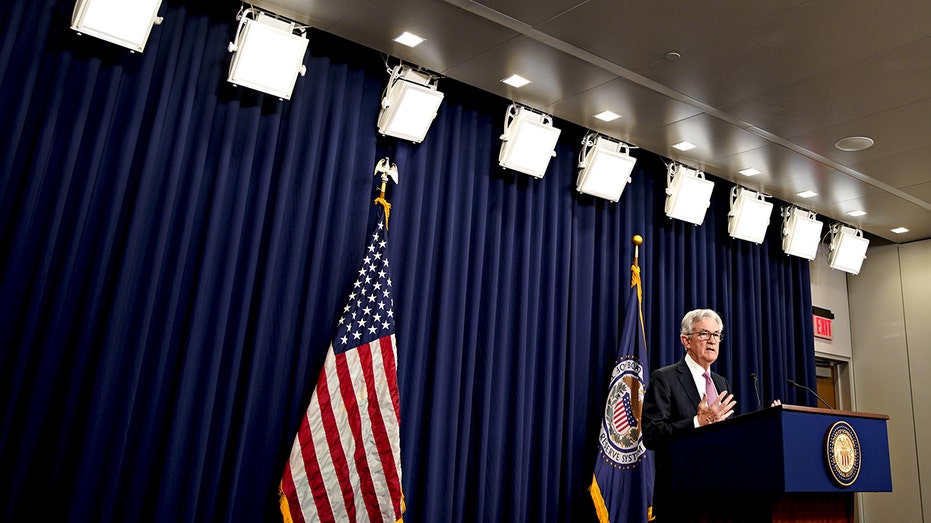Final GDP reading shows US economy shrank 0.6% in the spring, cementing start of recession
Economists expected the final GDP reading to be unchanged at 0.6%
GDP down 0.6 percent in Q2
GDP dipped at an annual rate of 0.6 percent in the second quarter of 2022. FOX Business' Jackie DeAngelis with more.
The U.S. economy shrank for the second consecutive quarter in the three months ended June, according to the final estimate from the Bureau of Economic Analysis, meeting the criteria for a so-called technical recession as raging inflation and higher interest rates weighed on spending.
The updated report, released Thursday, showed that gross domestic product (GDP), the broadest measure of goods and services produced across the economy, shrank by 0.6% on an annualized basis in the second quarter. That is below the initially reported 0.9% decline and unchanged from the second reading of a 0.6% decline.
Economic output already fell over the first three months of the year, with GDP tumbling 1.6%, the worst performance since the spring of 2020, when the economy was still deep in the throes of the COVID-19-induced recession.
However, another data point known as gross domestic income, which is an alternative measure of economic growth, actually increased by 0.1% in the second quarter.
FED RAISES INTEREST RATES BY 75 BASIS POINTS IN ANOTHER HISTORIC MOVE TO TACKLE INFLATION

Construction workers on Flatbush Avenue in Brooklyn, N.Y., on July 22, 2022. (Michael M. Santiago / Getty Images)
Recessions are technically defined by two consecutive quarters of negative economic growth and are characterized by high unemployment, low or negative GDP growth, falling income and slowing retail sales, according to the National Bureau of Economic Research (NBER), which tracks downturns.
With back-to-back declines in growth, the economy meets the technical criteria for a recession, which requires a "significant decline in economic activity that is spread across the economy and that lasts more than a few months." Still, the NBER — the semi-official arbiter — weighs multiple factors when calling a recession and typically takes up to a year before announcing the decision.
The NBER has stressed that it relies on more data than GDP in determining whether there is a recession, such as unemployment and consumer spending, which remained strong in the first six months of the year. It also takes into consideration the depth of any decline in economic activity.
SEVERE RECESSION NEEDED TO COOL INFLATION, BANK OF AMERICA ANALYSTS SAY
The latest downturn stems from a number of factors, including declines in private inventories, residential and nonresidential investment, and government spending at the federal, state and local levels. Those decreases were offset by increases in net exports — the difference between what the U.S. exports and what it imports — as well as consumer spending, which accounts for two-thirds of GDP.

Contractors on the roof of a house under construction at the Norton Commons subdivision in Louisville, Kentucky, on July 1, 2022. (Luke Sharrett/Bloomberg via / Getty Images)
"Thus, real GDP could decline by relatively small amounts in two consecutive quarters without warranting the determination that a peak had occurred," the nonprofit said on its website.
The committee does not meet regularly, only when members decide it is warranted.
THE FED'S WAR ON INFLATION COULD COST 1M JOBS
There are growing fears on Wall Street that the Federal Reserve will trigger a downturn as it raises interest rates at the fastest pace in three decades as the central bank races to catch up with runaway inflation.
Policymakers last week approved their fifth consecutive interest rate hike and laid out an aggressive path for future increases that will put the federal funds rate range well into restrictive territory. Fed Chair Jerome Powell also walked away from the promise of a soft landing — the delicate balance between curbing inflation without crushing growth — warning that fighting inflation warranted economic "pain."

Federal Reserve Chairman Jerome Powell speaks during a news conference following a Federal Open Market Committee meeting in Washington, D.C., on May 4, 2022. (Al Drago/Bloomberg via / Getty Images)
CLICK HERE TO READ MORE ON FOX BUSINESS
"The chances of a soft landing are likely to diminish to the extent that policy needs to be more restrictive or restrictive for longer," Powell told reporters in Washington. "Nonetheless, we’re committed to getting inflation back down to 2%. We think a failure to restore price stability would mean far greater pain."





















